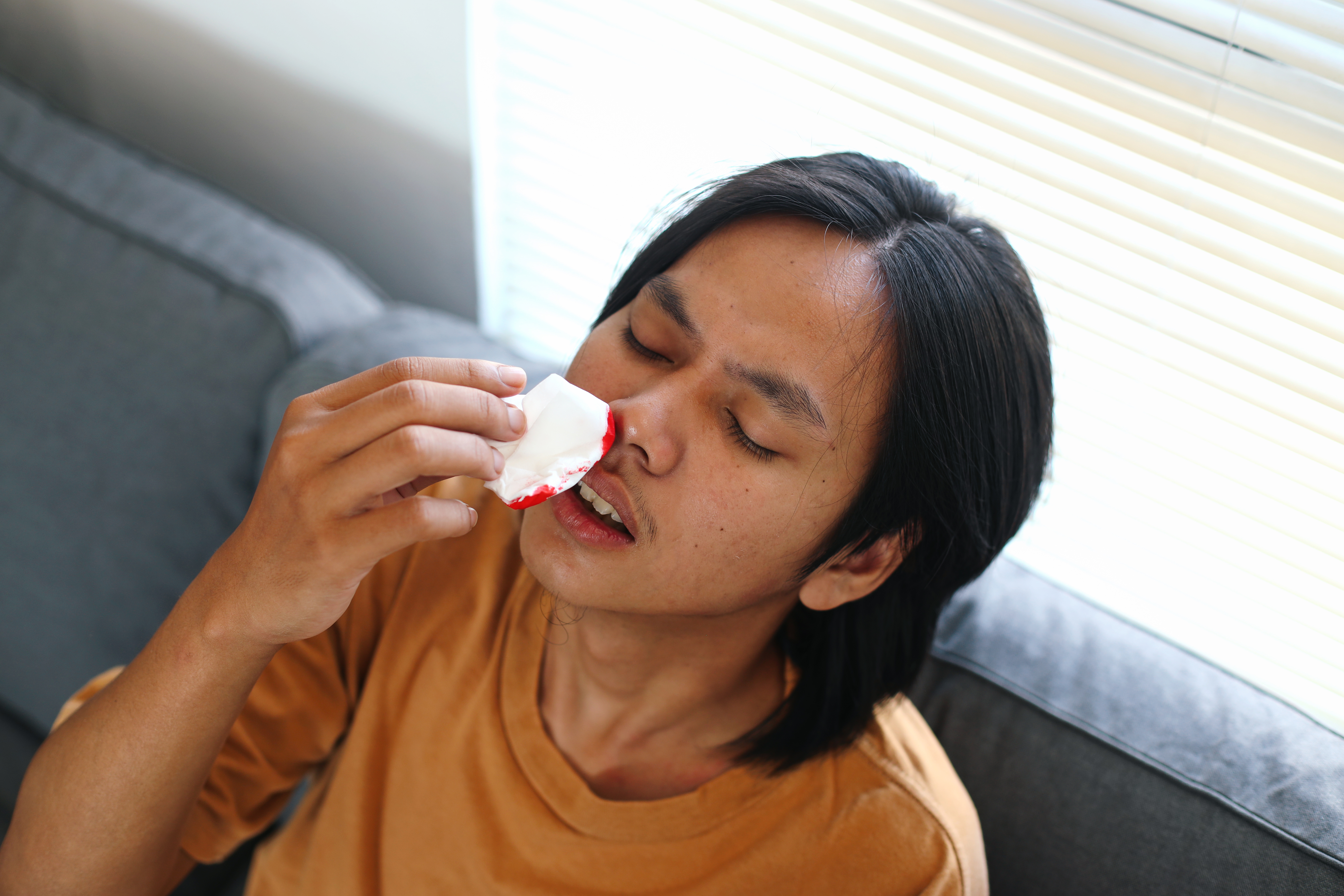14 Surprising Symptoms of Blood Pressure Issues You Shouldn’t Ignore
Blood pressure, often dubbed the silent killer, is a critical health marker that can stealthily affect our well-being without any overt signs. This insidious nature makes it imperative to be vigilant about the subtle symptoms that might indicate issues. High blood pressure, or hypertension, affects millions globally, often leading to severe complications if left unchecked. Conversely, low blood pressure, or hypotension, can also pose significant health risks. This article aims to unravel the unexpected top 14 symptoms of blood pressure issues that demand your attention. By understanding these symptoms, we can better prepare ourselves to take proactive measures in managing our health. As we delve into each symptom, we will explore their implications, underlying mechanisms, and the interconnections that weave the narrative of blood pressure-related health challenges. This comprehensive journey will equip you with the knowledge to identify potential problems early, ensuring timely intervention and management.
1. Persistent Headaches: More Than Just a Nuisance

Headaches are a common ailment, often brushed aside as mere inconveniences. However, when they become persistent and severe, they could be indicative of underlying blood pressure issues. High blood pressure can lead to increased pressure in the blood vessels of the brain, resulting in tension-type or migraine-like headaches. These headaches often occur in the morning and can be accompanied by throbbing sensations. It's crucial to monitor the frequency and intensity of headaches, as they can serve as an early warning sign of hypertension. Conversely, low blood pressure can also cause headaches, often characterized by a dull, persistent ache. Understanding the nature of these headaches can help differentiate between the two conditions and guide appropriate medical consultation.
2. Dizziness and Lightheadedness: A Balancing Act

Dizziness and lightheadedness are sensations that can disrupt daily life, often leading to feelings of instability and disorientation. These symptoms can be particularly alarming when they occur frequently or without an apparent cause. High blood pressure can lead to dizziness due to the excessive force exerted on blood vessels, affecting blood flow to the brain. On the other hand, low blood pressure can cause insufficient blood flow, leading to similar sensations. It's essential to pay attention to the circumstances under which dizziness occurs, such as standing up quickly or after intense physical activity, as these can provide clues to the underlying issue. Proper diagnosis and management can help restore balance and prevent potential falls or injuries.
3. Blurred Vision: Seeing Beyond the Obvious

Vision changes, particularly blurred vision, can be a surprising indicator of blood pressure issues. High blood pressure can damage the small blood vessels in the eyes, leading to retinopathy, which can cause blurred vision or even vision loss if left untreated. This symptom is often overlooked but can serve as a critical warning sign of hypertension. Regular eye examinations can help detect these changes early, allowing for timely intervention. In contrast, low blood pressure can cause temporary blurred vision due to inadequate blood supply to the eyes. Recognizing these visual changes and seeking prompt medical advice can prevent long-term complications and preserve eye health.
4. Fatigue and Lethargy: The Unseen Drain

Fatigue and lethargy are symptoms that can significantly impact quality of life, often leading to decreased productivity and overall well-being. While these symptoms can result from various factors, they can also be indicative of blood pressure issues. High blood pressure can cause the heart to work harder, leading to fatigue as the body struggles to maintain adequate blood flow. Conversely, low blood pressure can result in insufficient oxygen and nutrient delivery to tissues, causing feelings of exhaustion. Understanding the relationship between fatigue and blood pressure can help identify potential problems and guide lifestyle changes or medical interventions to restore energy levels.
5. Shortness of Breath: The Breathless Whisper

Experiencing shortness of breath can be unsettling, often leading to anxiety and discomfort. This symptom can be a result of high blood pressure, which can cause the heart to work harder, leading to fluid accumulation in the lungs and subsequent breathing difficulties. It's essential to monitor the onset and duration of shortness of breath, as it can indicate worsening hypertension or heart-related complications. On the other hand, low blood pressure can also cause shortness of breath due to reduced oxygen delivery to tissues. Recognizing these patterns and seeking medical evaluation can help address the underlying cause and improve respiratory function.
6. Chest Pain: The Alarming Signal

Chest pain is a symptom that should never be ignored, as it can signal serious underlying health issues, including blood pressure problems. High blood pressure can lead to chest pain by causing the heart to work harder, potentially leading to angina or even a heart attack. This pain is often described as a squeezing or pressure sensation in the chest. In contrast, low blood pressure can cause chest pain due to inadequate blood flow to the heart muscle, leading to ischemia. Understanding the nature and triggers of chest pain can help differentiate between blood pressure-related causes and guide appropriate medical intervention.
7. Heart Palpitations: The Rhythmic Warning

Heart palpitations, characterized by a racing or irregular heartbeat, can be a disconcerting experience for many. These sensations can be linked to blood pressure issues, with high blood pressure causing the heart to beat faster to compensate for increased vascular resistance. This can lead to palpitations, often accompanied by anxiety or a feeling of impending doom. Low blood pressure can also cause palpitations as the heart attempts to increase cardiac output to maintain adequate blood flow. Monitoring heart rate and rhythm, particularly during episodes of palpitations, can provide valuable insights into potential blood pressure problems and guide further evaluation.
8. Nausea and Vomiting: The Unexpected Turn

Nausea and vomiting are symptoms that can arise from various conditions, but they can also be linked to blood pressure issues. High blood pressure can affect the gastrointestinal system, leading to nausea and vomiting as a result of increased pressure on the stomach and intestines. These symptoms can be particularly pronounced during hypertensive crises, where blood pressure spikes dramatically. Conversely, low blood pressure can cause nausea due to reduced blood flow to the digestive system, leading to impaired function. Recognizing these symptoms and their association with blood pressure can help guide appropriate medical management and prevent complications.
9. Nosebleeds: The Unanticipated Drip

Nosebleeds, while often benign, can be a surprising symptom of blood pressure issues. High blood pressure can cause the delicate blood vessels in the nose to rupture, leading to spontaneous nosebleeds. These bleeds can be frequent and difficult to control, serving as a warning sign of uncontrolled hypertension. It's essential to monitor the frequency and severity of nosebleeds, as they can indicate the need for medical evaluation and blood pressure management. In contrast, low blood pressure is less commonly associated with nosebleeds, but can still occur in certain cases. Understanding the context and triggers of nosebleeds can help differentiate between potential causes and guide appropriate intervention.
10. Frequent Urination: The Overlooked Indicator

Frequent urination is a symptom that can be easily overlooked, but it can be a sign of blood pressure issues. High blood pressure can affect kidney function, leading to increased urine production as the body attempts to regulate fluid balance. This symptom can be particularly pronounced during nighttime, leading to disrupted sleep and decreased quality of life. Conversely, low blood pressure can also cause frequent urination as the body tries to compensate for reduced blood volume. Recognizing changes in urinary habits and seeking medical evaluation can help identify underlying blood pressure problems and guide appropriate management.
11. Cognitive Changes: The Mind's Murmur

Cognitive changes, such as memory loss or difficulty concentrating, can be a subtle yet significant symptom of blood pressure issues. High blood pressure can lead to cognitive decline by affecting blood flow to the brain, resulting in reduced oxygen and nutrient delivery. This can manifest as forgetfulness, confusion, or difficulty focusing on tasks. In contrast, low blood pressure can also cause cognitive changes due to inadequate cerebral perfusion. Understanding the relationship between cognitive function and blood pressure can help identify potential problems early and guide interventions to preserve brain health and cognitive function.
12. Swelling in Extremities: The Silent Swell

Swelling in the extremities, such as the hands, feet, or ankles, can be a subtle yet telling symptom of blood pressure issues. High blood pressure can lead to fluid retention as the body struggles to maintain balance, resulting in swelling. This symptom can be particularly pronounced after periods of inactivity or prolonged sitting. Conversely, low blood pressure can also cause swelling due to inadequate blood flow and fluid accumulation. Recognizing changes in swelling patterns and seeking medical evaluation can help identify underlying blood pressure problems and guide appropriate management to prevent complications.
13. Mood Changes: The Emotional Echo

Mood changes, such as irritability, anxiety, or depression, can be a surprising symptom of blood pressure issues. High blood pressure can affect the brain's neurotransmitter balance, leading to mood disturbances and emotional instability. This can manifest as increased irritability, anxiety, or even depressive symptoms. In contrast, low blood pressure can also cause mood changes due to reduced blood flow to the brain, affecting emotional regulation. Understanding the relationship between mood and blood pressure can help identify potential problems early and guide interventions to improve mental health and emotional well-being.
14. Skin Changes: The Visible Clue

Skin changes, such as paleness or cold, clammy skin, can be a visible indicator of blood pressure issues. High blood pressure can lead to changes in skin appearance due to altered blood flow and vascular resistance, resulting in flushed or red skin. Conversely, low blood pressure can cause paleness or cold, clammy skin due to reduced blood flow to the skin's surface. Recognizing these changes and their association with blood pressure can help identify potential problems early and guide appropriate medical management to maintain healthy skin and overall well-being.
Navigating the Blood Pressure Labyrinth

As we conclude this exploration of the unexpected symptoms of blood pressure issues, it becomes clear that vigilance and awareness are key to maintaining health. Each symptom, from headaches to skin changes, offers a glimpse into the complex interplay of blood pressure and overall well-being. By recognizing these signs early and seeking medical evaluation, we can take proactive steps to manage blood pressure effectively and prevent complications. This journey through the labyrinth of blood pressure symptoms underscores the importance of regular monitoring, healthy lifestyle choices, and informed healthcare decisions. As we navigate this intricate landscape, let us remain attentive to the whispers of our bodies, ensuring a healthier, more balanced life.
